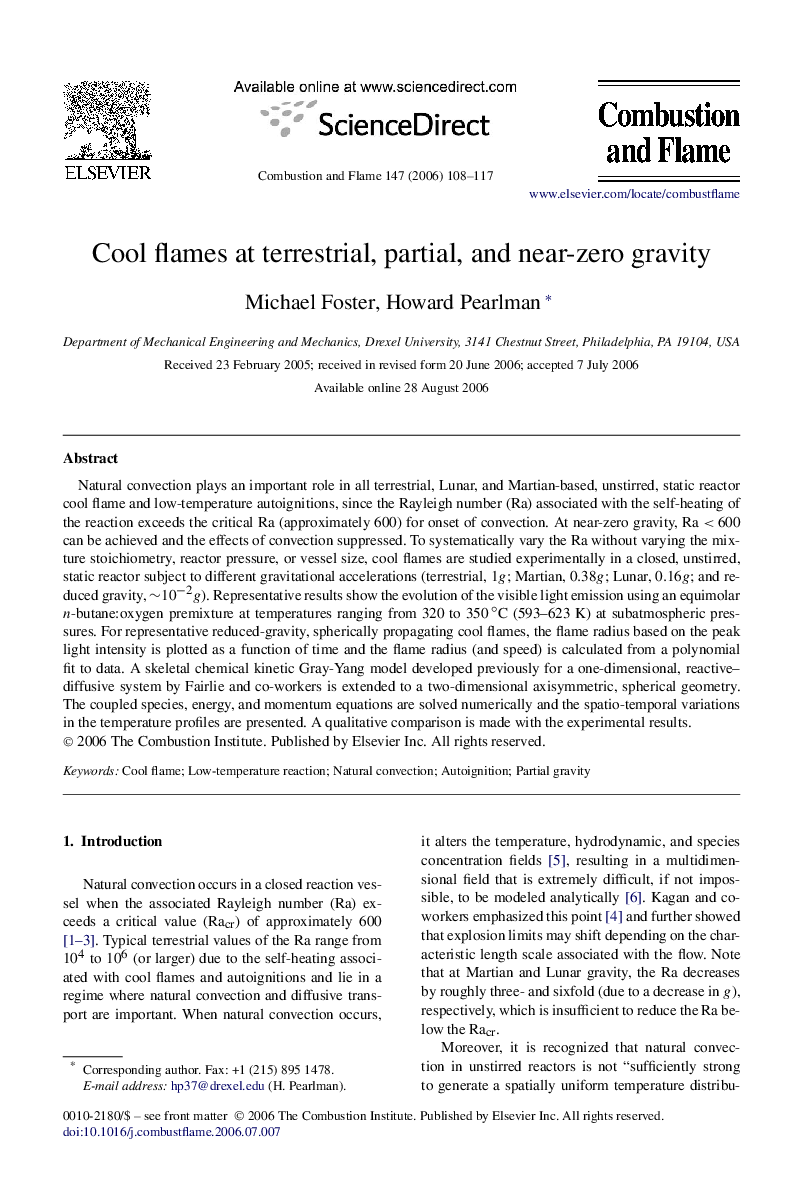| Article ID | Journal | Published Year | Pages | File Type |
|---|---|---|---|---|
| 169852 | Combustion and Flame | 2006 | 10 Pages |
Natural convection plays an important role in all terrestrial, Lunar, and Martian-based, unstirred, static reactor cool flame and low-temperature autoignitions, since the Rayleigh number (Ra) associated with the self-heating of the reaction exceeds the critical Ra (approximately 600) for onset of convection. At near-zero gravity, Ra < 600 can be achieved and the effects of convection suppressed. To systematically vary the Ra without varying the mixture stoichiometry, reactor pressure, or vessel size, cool flames are studied experimentally in a closed, unstirred, static reactor subject to different gravitational accelerations (terrestrial, 1g; Martian, 0.38g; Lunar, 0.16g ; and reduced gravity, ∼10−2g∼10−2g). Representative results show the evolution of the visible light emission using an equimolar n-butane:oxygen premixture at temperatures ranging from 320 to 350 °C (593–623 K) at subatmospheric pressures. For representative reduced-gravity, spherically propagating cool flames, the flame radius based on the peak light intensity is plotted as a function of time and the flame radius (and speed) is calculated from a polynomial fit to data. A skeletal chemical kinetic Gray-Yang model developed previously for a one-dimensional, reactive–diffusive system by Fairlie and co-workers is extended to a two-dimensional axisymmetric, spherical geometry. The coupled species, energy, and momentum equations are solved numerically and the spatio-temporal variations in the temperature profiles are presented. A qualitative comparison is made with the experimental results.
